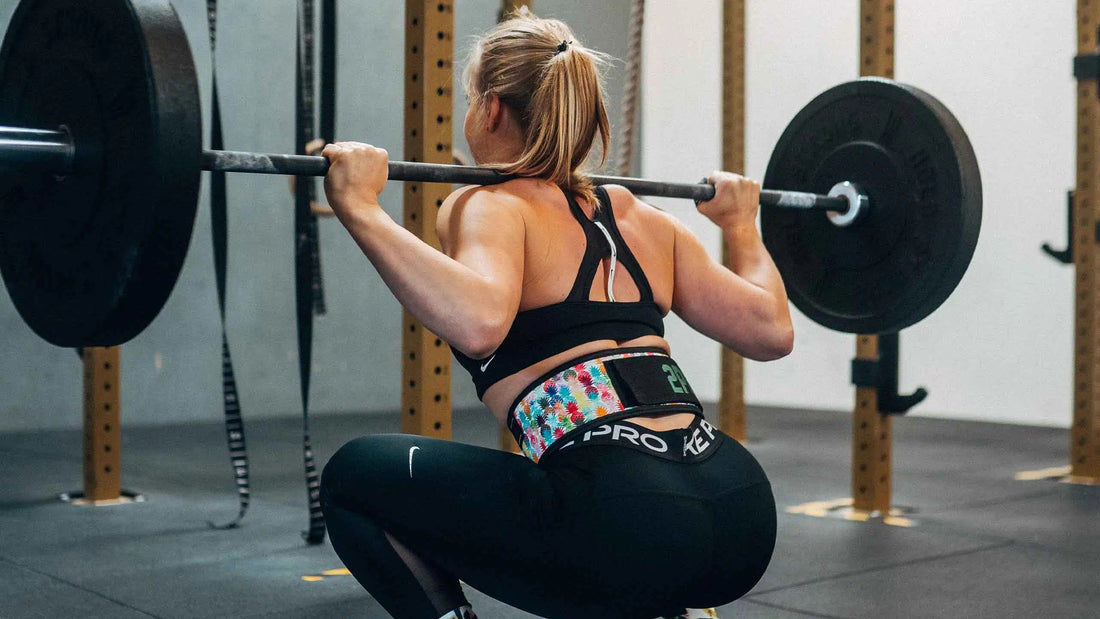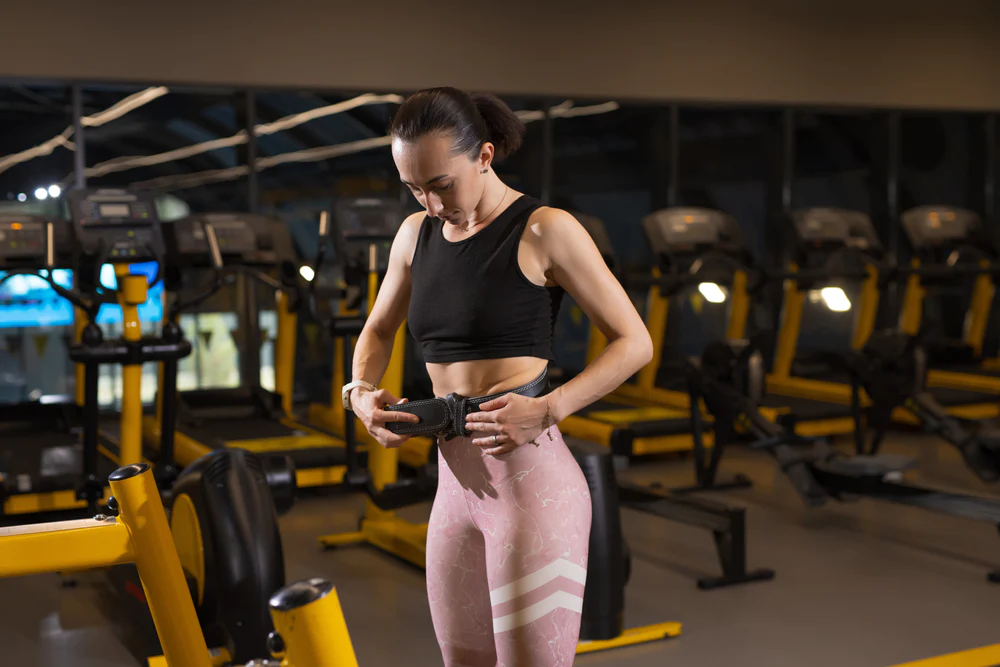
Unleash Your Inner Strength: The Power of Weightlifting Belt for Women
Share
Do you want to unleash your inner strength? Are you tired of feeling limited and restricted during your weightlifting workouts? Look no further because the solution is here: weightlifting belts for women. These specialized belts are designed to provide support and stability for female weightlifters, allowing them to push their limits and achieve their fitness goals.
But why use a weightlifting belt? Aren't they just for bodybuilders or powerlifters? Not at all. Weightlifting belts can benefit women of all fitness levels and goals, from beginners to advanced lifters. They help with proper form, prevent injury, and provide core stability during heavy lifts. Plus, they come in stylish designs and colors to match your workout gear.
In this guide, we will dive into the power of weightlifting belts for women and explore their benefits, how to use them properly, and review some of the best lifting belt options on the market.
Should Women Use Weightlifting Belts?

The short answer is yes. Women can and should use weightlifting belts when performing heavy lifts. These belts are specifically for female athletes and designed to provide support for the lower back and core muscles, which can be prone to injury during weightlifting exercises.
Moreover, women tend to have wider hips and smaller waists compared to men, making it more challenging to maintain proper form while lifting heavy weights. A weightlifting belt can help stabilize the core and maintain correct posture, reducing the risk of injury.
Also, weightlifting belts can be beneficial for pregnant women. The added support women lifting belts can help alleviate pressure on the lower back and provide stability during exercises that may involve lifting weights.
Benefits of Weightlifting Belts for Women
There are the main benefits of using a weightlifting belt for women.
1. Improved Performance
By providing support and stability to the lower back and core muscles, a weightlifting belt allows women to lift heavier weights with proper form. This, in turn, leads to increased strength and improved performance in the gym.
2. Reduced Risk of Injury
As mentioned, weightlifting belts help stabilize the core and maintain proper form during heavy lifts. This reduces the strain on the back and decreases the risk of injury.
3. Increased Confidence
Wearing the best weightlifting belt can also give women confidence while lifting. Knowing that your core is supported and protected when wearing lifting belts can help you push through mental barriers and achieve your fitness goals.
4. Stylish Designs
Gone are the days of plain black weightlifting belts. With the growing popularity of women in fitness, there is now a variety of stylish and colorful options leather belts to choose from. You can find a belt that not only provides support but also matches your personal style.
How to Use a Weightlifting Belt Properly
To reap the full benefits of a weightlifting belt, it's essential to wear lifting belts correctly. Here are some tips for using a weightlifting belt properly:
-
Wear the belt tight but not uncomfortable. It should be snug enough to provide support but not restrict your breathing.
-
Position the belt over your lower back and around your abdominal muscles, just above the hip bones.
-
Make sure the belt is straight and not twisted.
-
Use the belt for heavy lifting exercises, not for every exercise. It's essential to strengthen your core muscles without relying on the belt too much.
How to choose the right weightlifting belt
When shopping for a weightlifting belt, here are some factors to consider:
-
Material: Look for durable materials such as leather or nylon belts that can withstand heavy use.
-
Width and Thickness: A wider and thicker women's lifting belts will provide more support but may feel uncomfortable for some women. Find the right balance between support and comfort.
-
Closure type: Weightlifting belts come in various closure options, such as buckles, velcro, and prongs. Choose the one that feels secure and comfortable for you.
-
Size: Make sure to measure your waist before purchasing a belt to ensure the perfect fit.
-
Reviews: Read reviews from other women who have used the nylon lifting belt to better understand its quality and effectiveness.
What makes a Weightlifting Belt different for Women
Women's weightlifting belts are designed with a smaller waist size and wider hip shape in mind. They also tend to have a narrower back portion to fit the female body better. Some women's weightlifting belts also come with added padding or contoured designs for extra comfort.
Moreover, women's weightlifting belts and powerlifting belts are often more stylish than their male counterparts, offering various colors and designs to choose from.
Tips for Incorporating a Weightlifting Belt into Your Workout Routine
Here are some tips for incorporating a weightlifting belt into your workout routine:
- Start using a good weight lifting belt during heavy lifts, such as squats or deadlifts.
- Gradually increase the weight and incorporate the belt in more exercises if desired.
- Be mindful of not relying too much on the women's weightlifting belt. It's essential to continue strengthening your core muscles without the added support.
- Listen to your body and adjust the belt as needed for comfort and proper form
Pros and Cons of Using a Weightlifting Belt
Pros:
-
It provides support and stability for the lower back and core muscles.
-
It can increase performance and confidence during heavy lifts.
-
It comes in various styles to match personal preferences.
Cons:
-
It may hinder natural core muscle development if relied on too much.
-
Can be uncomfortable or restrictive for some women.
-
May not be necessary for all weightlifting exercises.
FAQs
Do I need a belt for squats?
It is not necessary to use a weightlifting belt for squats, but it can provide added support and stability during heavy lifts. Plus, it can help maintain proper form and reduce the risk of injury. Also, using a belt for squats can help increase performance and confidence.
Can I use a men's weightlifting belt?
While both men and women can use weightlifting belts, it is recommended for women to use belts specifically designed for their body shape. Women's weightlifting belts are often more contoured and offer a better fit for the female body.
Should I wear a weightlifting belt for every workout?
No, it is not necessary to wear a weightlifting belt for every workout. It is essential to continue strengthening your core muscles without relying too much on the added support of a weight belt. Use it for heavy lifts or exercises that may put more strain on your lower back.
Can pregnant women use a weightlifting belt?
It is advised for pregnant women to consult with their doctor before using a weightlifting belt. It may be uncomfortable or restrictive during pregnancy and could potentially cause harm to the baby. Also, it is essential to listen to your body and avoid overexertion during pregnancy. Overall, it's best to err on the side of caution and avoid using a weightlifting belt while pregnant.
Conclusion
In conclusion, weightlifting belts can be a helpful tool for women looking to improve their performance and protect their lower back during heavy lifts. By stabilizing the core and maintaining proper form, these belts can reduce the risk of injury and provide an added confidence boost.
When using a weightlifting belt, it's important to wear it properly and not rely on it too much for every exercise. With a variety of stylish options available, women can find a belt that not only provides support but also matches their personal style.
